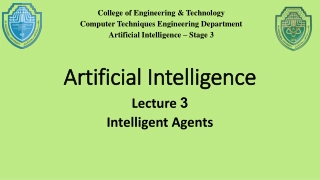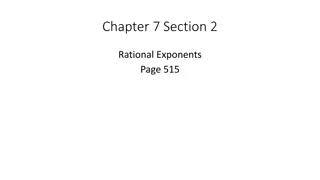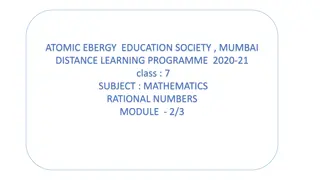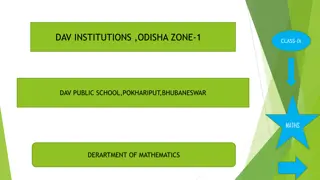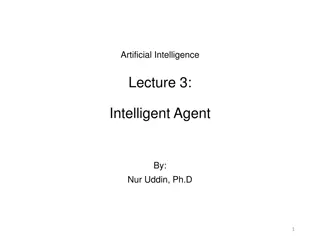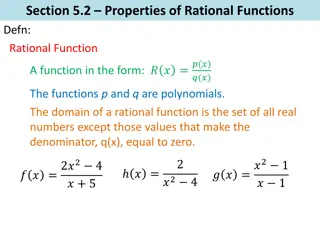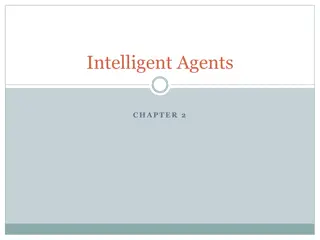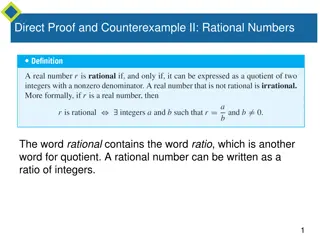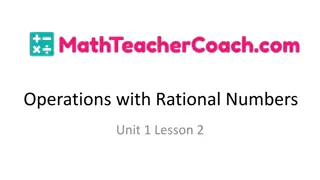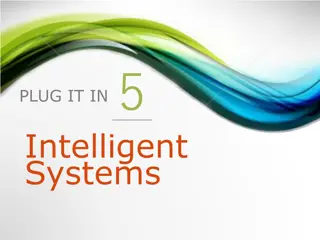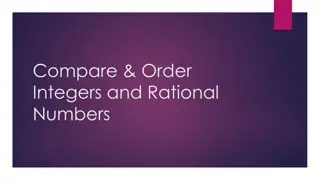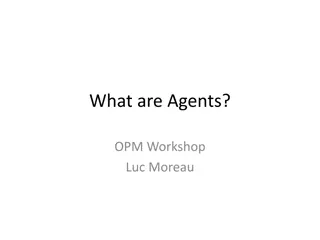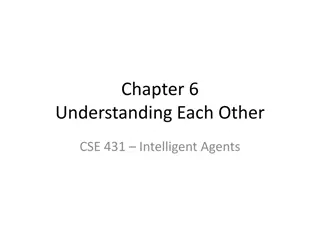Understanding Intelligent Agents: Key Concepts and Rational Behavior
Intelligent agents operate based on perceptions, reasoning, and actions within various environments. Agents function through a sequence of percepts, utilizing programs to interpret their architecture. The Vacuum-Cleaner World serves as an illustrative environment for agent behavior, highlighting the importance of rational decision-making. Rationality in agents relies on performance measures, prior knowledge, and actionable insights to optimize behavior.
Download Presentation

Please find below an Image/Link to download the presentation.
The content on the website is provided AS IS for your information and personal use only. It may not be sold, licensed, or shared on other websites without obtaining consent from the author. Download presentation by click this link. If you encounter any issues during the download, it is possible that the publisher has removed the file from their server.
E N D
Presentation Transcript
Intelligent Agents Outline I. Agents and rational behavior II. The nature of environments III. The structure of agents * In part based on notes by Dr. Jin Tian. ** Figures are from the textbook site (or drawn by the instructor) unless their sources are specifically cited.
I. Agents Perception (sensors) Reasoning / cognition Action (actuators) Percept: perceptual inputs at any given instant. Percept sequence: complete history of everything the agent has ever perceived. Agent function (behavior): reasoning a percept sequence an action * Illustration from https://www.doc.ic.ac.uk/project/examples/2005/163/g0516334/index.html.
Construction of the Agent Function Tabulation? Very large, if not infinite table! Instead, implement the function internally by an agent program. The program runs on the agent s architecture to produce the function. Agent = architecture + program Abstract description vs concrete implementation!
The Vacuum-Cleaner World Environment: squares ? & ? Percepts: [?, Dirty] state of the square square the vacuum cleaner is in Actions: left, right, suck, nothing
Agent Function Many ways to fill in the right column What is the right way? Good/bad, intelligent/stupid?
Rational Behavior? if status == Dirty then return Suck else if location == A then return Right else if location == B then return Left Is this agent rational? No, needless oscillation once all the dirt is cleaned up! improve Do nothing when all the squares are clean.
Rationality What is rational depends on four things: performance measure defining the criterion of success prior knowledge of the environment performable actions by the agent perceptual sequence to date A rational agent should select an action expected to maximize its performance measure.
Performance Measure Awards one point for each clean square at each time step. Meanwhile, assume known environment unknown dirt distribution and agent s initial location only available actions: Left, Right, and Suck Left and Right having no effect if they would take the agent outside perfect sensing of location and dirt existence there This agent is rational.
Omniscience vs Rationality An omniscient agent knows the actual outcome of its actions. Impossible in reality! Rationality maximizes the expected performance. Learn as much as it perceives. Does not require omniscience. Perfection maximizes actual performance. Rationality omniscience perfection
II. Task Environment To design a rational agent, we must specify its task environment: performance measure environment of the agent PEAS agent s actuators and sensors
Automated Taxi Driver Its task environment in the PEAS description:
PEAS for Other Agents Universal Robots ActiNav autonomous bin picking kit
Environment Properties Categorize task environments according to properties. appropriate families of techniques for agent implementation
Environment Property 1 Fully observable vs. partially observable if the sensors can detect all aspects that are relevant to the choice of action.
Environment Property 2 Single-agent vs. multiagent competitive cooperative
Environment Property 3 if the next state of the environment is completely determined by the current state and the action executed by the agent. otherwise. Deterministic vs. stochastic unable to keep track of all the cards in opponents hands; must be treated as nondeterministic
Environment Property 4 if the agent s experience is divided into atomic episodes, among which one does not depend on the actions taken in previous ones. if the current decision could affect all future decisions. Episodic vs. sequential instantaneous actions can have long-term consequences.
Environment Property 5 Dynamic vs. semidynamic vs. static if the environment can change while the agent is choosing an action. if the environment does not change but the agent s performance score does. otherwise.
Environment Property 6 The distinction applies to the environment s state the way time is handled the agent s percepts and actions Discrete vs. continuous
III. The Structure of Agents The job of AI is to design an agent program that implements percepts action agent = architecture + program Computing device, sensors & actuators All agent programs have the same skeleton: input: current percept output: action program: manipulates inputs to produce output
Table Lookup Agent It retains complete percept sequence in memory. Doomed to failure due to daunting table size (e.g., easily over 10150 entries for chess) no storage space no time for construction no way for the agent to learn all the entries no guidance on how to fill the table entries
Basic Agent Types Four basic types embody the principles underlying almost all intelligent systems: Simple reflex agents Model-based reflex agents Goal-based agents Utility-based agents All of them can be converted into Learning-based agents
Simple Reflex Agent Select actions based on the current percepts, and ignore the percept history. E.g., the vacuum agent Implemented through condition- action rule. ifdirtythensuck ifcar-in-front-is-braking theninitiate-braking Rectangles: agent s current internal state Ovals: background information used in the process.
Vacuum-Cleaner World (Revisited) if status == Dirty then return Suck else if location == A then return Right else if location == B then return Left
Simple Reflex Agent Limited intelligence It will work only if the correct decision can be made based on only the current percept, i.e., only if the environment is fully observable.
Model-based Reflex Agent Partially observable environment. Need to maintain some internal state. Update it using knowledge. Model of the world How does the world change? How do actions affect the world?
How This Agent Works It is rarely possible to describe the exact current state of the environment. The maintained state does not have to describe the world.
Goal-Based Agent Needs also some goal information describing desirable situations. Search and planning when a long sequence of actions is required to find the goal. Difference in taking the future into account.
Utility-Based Agent Different ways to achieve a goal sometimes. Use a utility function that maps a (sequence of states) to a real number (utility) internal performance measure Maximize expected utility. Goal improvements: selection among conflicting goals selection based on likelihood of success and goal importance
Learning-Based Agent Preferred method for creating state-of-the-art AI systems: Allow operation in initially unknown environments. Adapt to changes in the environment --- robustness. Modifications of the four components to bring them in closer agreement with the available feedback Better overall performance
Learning-Based Agent Learning element introduces improvements in performance element. Critic provides feedback on the agent s performance based on fixed performance standard. Performance element selects actions based on the precepts. Problem generator suggests actions that will lead to new and informative experiences.


